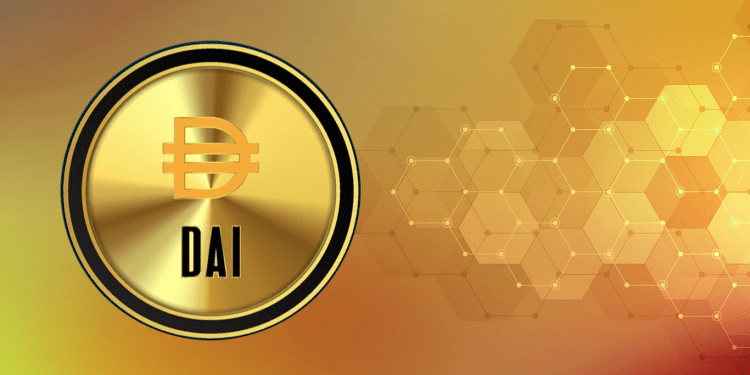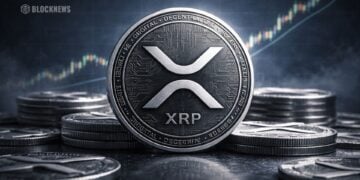Our fourth article in the “All eyes on stablecoins” series brings us to Dai, launched in 2017. It is the fourth-ranked stablecoin by market cap standing at approximately $6 billion. Unlike the first three ranked stablecoins, Dai is an overcollateralized crypto-backed stablecoin intricately linked to MakerDAO and the Maker Protocol. Its decentralized nature is another distinguishing factor, and due to it being a stablecoin, it was designed to maintain a 1:1 peg with the US dollar. The wildest swings in its price came in at $1.22 in March 2020 and $0.90 in November 2019.
It all began in 2014 when Rune Christensen proposed the concept of a collateralized stablecoin on Reddit. His idea continued developing through the Maker Foundation, part of the Maker community, which went on to build and launch the Maker Protocol. The Maker Protocol is a set of smart contracts (code) which manage the Dai stablecoin. It is built on the Ethereum blockchain and apart from enabling users to create Dai, it also handles the Maker collateral vaults (explained later), the oracles (which provide smart contracts with information from real-world data), and the DAO voting.
The MakerDAO is the community managed by people around the world who hold the governance token Maker (MKR), used in both the DAO and the Protocol. Through MKR, the community votes on issues such as risk management, stability fees, collateral types, collateral rates, etc. The voting weight of an individual is equivalent to the amount of MKR tokens locked in the contract. Holders also benefit from the appreciation in value which depends on the success of Dai.
In a nutshell, the MakerDAO is the community and the Protocol is the code that enacts the functions agreed upon by the community via MKR. This is what makes it decentralized and unbiased. Initially, users could only generate Dai by leveraging Ethereum (ETH) as collateral through the protocol, however other forms of collateral were always intended to be incorporated right from the start. Hence, Single-Collateral Dai (Sai) evolved into what is today known as Multiple-Collateral Dai (MCD). MCD was launched in November 2019, and the Maker Protocol now accepts any Ethereum-based asset which has been approved by MKR holders.
In the latest whitepaper, a desire to create a system that counters the issues with centralized systems is expounded. The aim was to create an unbiased, transparent, and highly-efficient permissionless system. A comparison to Bitcoin in its intention to eliminate a central authority is made, and a desire to create a better currency is laid out. Bitcoin’s volatility is seen as the reason why it cannot be adopted as mainstream money and Dai, due to its pegging, is hailed as the solution to this problem.
So how is Dai generated? Put simply, it is generated by any user who deposits collateral assets into a Maker Vault on the Maker Protocol. The collateral deposited always has to be higher in value than the amount of Dai generated, depending on the vault liquidation ratio, for example, a 150% collateralization ratio means that debt of 66.66 Dai needs to be supported by $100. The moment the user repays the generated Dai balance, the latter is then destroyed. This is how Dai enters and exits circulation. Of course, Dai is also available for trading on exchanges and since it is an ERC-20 token, it can be stored and transferred like any other Ethereum-based token. Users of Dai can also benefit from the Dai Savings Rate (DSR) to earn returns in exchange for locking Dai in the DSR smart contract.
A very central idea to the functioning of the system is over-collateralization, which is always more than Dai generated. All transactions are transparent and public and can be viewed on the Ethereum blockchain. This collateral is held in vaults which can be created through several interfaces, including the free-to-use Oasis app.
The Oasis app offers two products, namely the Oasis Borrow and the Oasis Multiply. Oasis borrow is the main entry point to the Maker Protocol. This is where Dai is generated against collateral. Ethereum wrapped Bitcoin, Chainlink, Polygon, and the Gemini Dollar are amongst the number of tokens accepted on Oasis borrow as collateral, whereby users only have to pay Ethereum gas fees and a stability fee (in Dai), which then goes to the Maker Protocol. The stability fee is intended to address the inherent risk in generating Dai against the collateral put in the vaults. In traditional terms, the stability fee can be thought of as an interest fee for the generation of Dai. On the other hand, Oasis Multiply allows users to buy more collateral with Dai generated, comparable to leverage-like trading. This is accessible without having to leave the vault, due to the three technologies incorporated in the app, namely, the Maker smart contracts, 1inch DEX aggregator, and Aave.
So, what happens if the collateral drops in value? The user is incentivized to top up their collateral or otherwise suffer a 13% penalty fee and get liquidated. Once Dai is returned and the stability fee is paid, the vault owner can withdraw all or some of the collateral, depending on the amount of Dai returned.
The Maker Protocol also has a set of auction mechanisms in place to safeguard the functioning of the system, based on supply and demand to maintain Dai’s peg. When selling the collateral is necessary, the collateral auction is triggered. Dai received via this sale is used to cover the vault’s outstanding obligations, including the liquidation fee. If any leftover collateral remains, it is returned to the original vault owner. If on the other hand, not enough Dai is raised, the deficit is converted into protocol debt which then triggers the debt auction. In this case, MKR is minted by the system and sold to bidders for Dai. This causes the MKR supply to increase, which then triggers the surplus/flap auction, the aim of which is to burn MKR to reduce its total supply. These three types of auctions ensure the stability of the Maker Protocol.
So how is the peg maintained and where does Dai source its value? It is done via the three systems working simultaneously; namely the Maker Protocol, types of risk, and risk teams. In contrast to fiat-based stablecoins, which mainly rely on the reserves and the liquidation of those reserves, a central authority is eliminated thereby allowing the community to lead the way. In line with this philosophy, after ensuring the long-term Protocol security and sustainability, the Maker Foundation started its dissolution in July 2021.
However, Dai didn’t escape ‘Black Thursday’ in March 2020 unscathed, an event that swept throughout all markets including traditional markets. The price of ETH lost 50% of its value in 24 hours and as a result, the Protocol triggered a large number of liquidations and auctions. Dai depegged, and Maker lost up to $6 million in Dai. The community quickly came together and following the event made several changes to the Protocol, in the form of, adjusting the auction parameters, adjusting the auction systems and liquidations so they can be halted, allowing USDC and other tokens to be used as collateral, and increasing the debt ceiling. Despite this setback, the stablecoin survived and improved to become the stablecoin that we know today. One of the criticisms is that MakerDAO is still too reliant on USDC (see below), the second biggest stable coin by market cap. What happens if USDC loses its peg or value?
These risks aside, the system is generally seen as very safe, although it has also been criticized over not being scalable as many other stablecoins on the market. After terraUSD’s recent demise Buterin has himself come out in defense of overcollateralized stablecoins and warned against putting them all in one bucket. He still sees potential even in algo-stablecoins. MKR was the first governance token on the Ethereum blockchain and the project is hailed as one of the most successful Defi applications on Ethereum. What comes next in the evolution of stablecoins? Stay tuned for more deep dives in this series “All eyes on stablecoins: 10/10 stablecoin series”.














